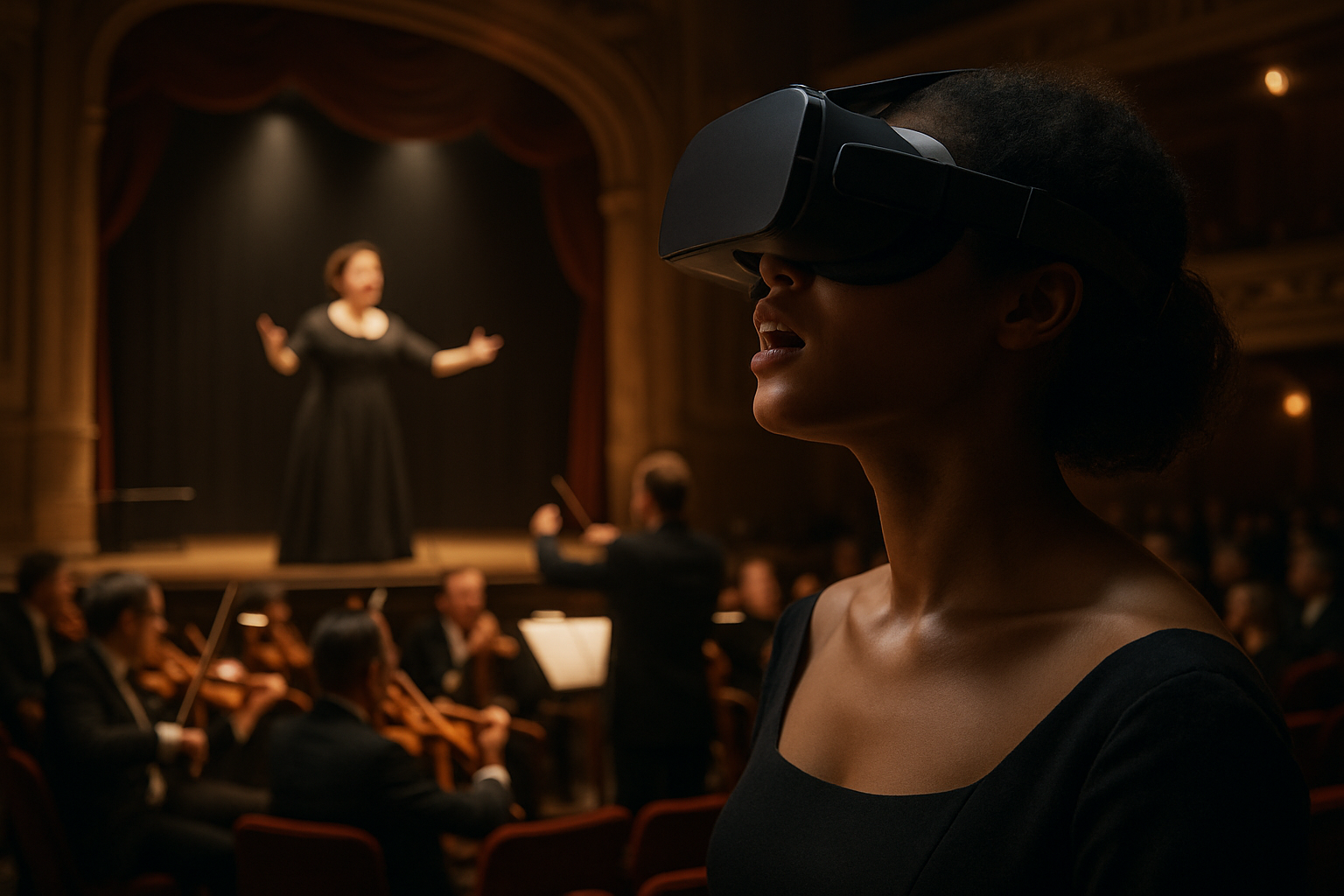Virtual Reality Opera: A New Frontier in Musical Performance
In the ever-evolving landscape of artistic expression, a groundbreaking fusion of technology and classical music is revolutionizing the opera experience. Virtual Reality (VR) opera, a cutting-edge art form, is pushing the boundaries of traditional performance, immersing audiences in fantastical worlds and reimagining how we engage with this centuries-old musical tradition. This innovative approach is captivating both opera aficionados and tech enthusiasts alike, promising a new era of musical storytelling.

Crafting a New Reality: The Creative Process
The creation of a VR opera involves a unique collaboration between traditional opera professionals and tech experts. Composers work closely with 3D artists and programmers to synchronize music with virtual environments. Directors face the challenge of choreographing performances for both physical and digital spaces, often requiring performers to adapt to new methods of expression.
Technological Challenges and Innovations
Developing a VR opera presents numerous technical hurdles. Engineers must ensure seamless audio-visual synchronization and develop intuitive interfaces for audience interaction. Recent advancements in haptic feedback and spatial audio have significantly enhanced the immersive quality of these performances, allowing viewers to feel the vibrations of an aria or pinpoint the location of individual instruments in a virtual orchestra.
The Audience Experience: A New Way to Engage with Opera
For audiences, VR opera offers an unprecedented level of engagement. Viewers can choose their perspective, moving freely through virtual sets or even interacting with the performance. This interactivity challenges the traditional passive role of the audience, blurring the lines between observer and participant. Some productions even allow multiple viewers to share the same virtual space, fostering a sense of community in the digital realm.
Impact on Traditional Opera Houses and Performers
The rise of VR opera has sparked debate within the classical music community. While some see it as a threat to traditional live performances, others view it as an opportunity to reach new audiences and revitalize the art form. Opera houses are exploring hybrid models, offering both physical and virtual performances. For performers, VR opera presents new challenges and opportunities, requiring them to adapt their craft to a digital medium while potentially expanding their reach to global audiences.
Educational Potential and Accessibility
Virtual Reality opera holds significant promise in music education. Students can now study complex staging and orchestrations from multiple angles, gaining insights previously impossible in traditional settings. Additionally, VR technology makes opera more accessible to those unable to attend live performances due to geographical or physical limitations, democratizing this historically elite art form.
Cultural and Artistic Implications
The emergence of VR opera raises intriguing questions about the nature of performance art in the digital age. Critics and scholars debate whether the technology enhances or dilutes the emotional impact of opera. Some argue that the immediacy and physicality of live performance cannot be replicated virtually, while proponents emphasize the new artistic possibilities opened by the medium.
Future Prospects and Evolving Narratives
As VR technology continues to advance, the potential for innovation in opera seems boundless. Experimental productions are exploring non-linear narratives, allowing audiences to influence the story’s progression. Others are incorporating artificial intelligence to create dynamic, responsive performances that change based on audience reactions. These developments suggest a future where the boundaries between creator, performer, and audience become increasingly fluid.
Conclusion: A New Chapter in Operatic History
Virtual Reality opera represents a bold step into the future of musical performance. By merging centuries-old traditions with cutting-edge technology, it offers a fresh canvas for artistic expression and audience engagement. As this new medium evolves, it has the potential to attract diverse audiences, inspire innovative compositions, and redefine our understanding of what opera can be. Whether viewed as a revolutionary force or a complementary addition to traditional forms, VR opera is undoubtedly writing a new chapter in the rich history of this enduring art form.





